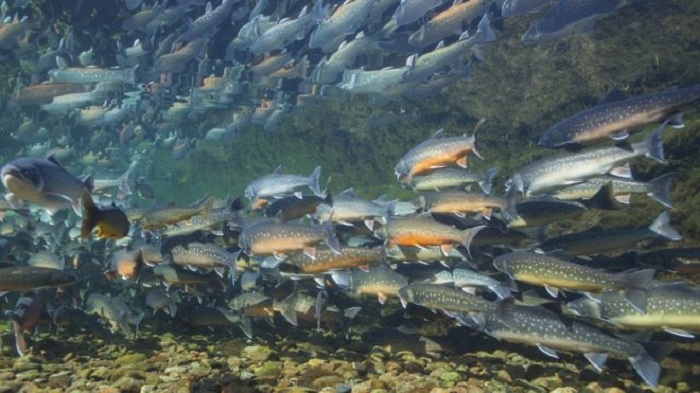DNA secrets to life in the deep

The DNA-based technique could be used for monitoring fish sustainably without having to catch them.
Fish populations are under pressure from over-fishing, pollution and climate change.
Dr Philip Francis Thomsen, of the University of Copenhagen, said the environmental DNA (eDNA) approach was "very universal", giving information on many fish, including flatfish, sharks and rays, and deep-sea species.
"We are basically doing equivalent to CSI [crime scene investigation] work for a biologist," he told BBC News.
"Investigating the biodiversity of the ocean by using environmental DNA as a proxy for what is actually living there."
Ocean `fingerprint`
Fish leave tiny bits of DNA in the water during their lives.
The genetic material is invisible to the naked eye, but can be extracted and sequenced, yielding a "DNA fingerprint of the ocean".
In the study, samples of seawater were taken by scientists during deepwater trawling off Greenland for research purposes.
All but two of 28 different types of fish captured had left traces of their DNA in seawater.
Another three were identified through their DNA alone. These included rare deep-sea species such as the angler fish.
The scientists then looked at two commercial fish species - the Greenland halibut and the redfish - in more detail.
They made a heat map of where most of the fish DNA was found.
And this map fitted "quite well" with the amount of fish actually caught.
Sustainable fishing
"This is the first evidence that there is a quantitative relation," said Dr Thomsen.
"We could say that the biomass catch is actually reflected in the amount of DNA in the water samples.
"But if we can fine tune this method, we might be able to use this as a supplement to estimating stock sizes and potentially to more sustainable fishing."
Dr Thomsen sees two other practical applications for the approach:
- assessing the impact of climate change on fish stocks - for example, some fish are moving northwards as waters get warmer
- investigating remote parts of the oceans where there is very little information on fish and other marine animals
The research is published in the journal, Plos One.















































